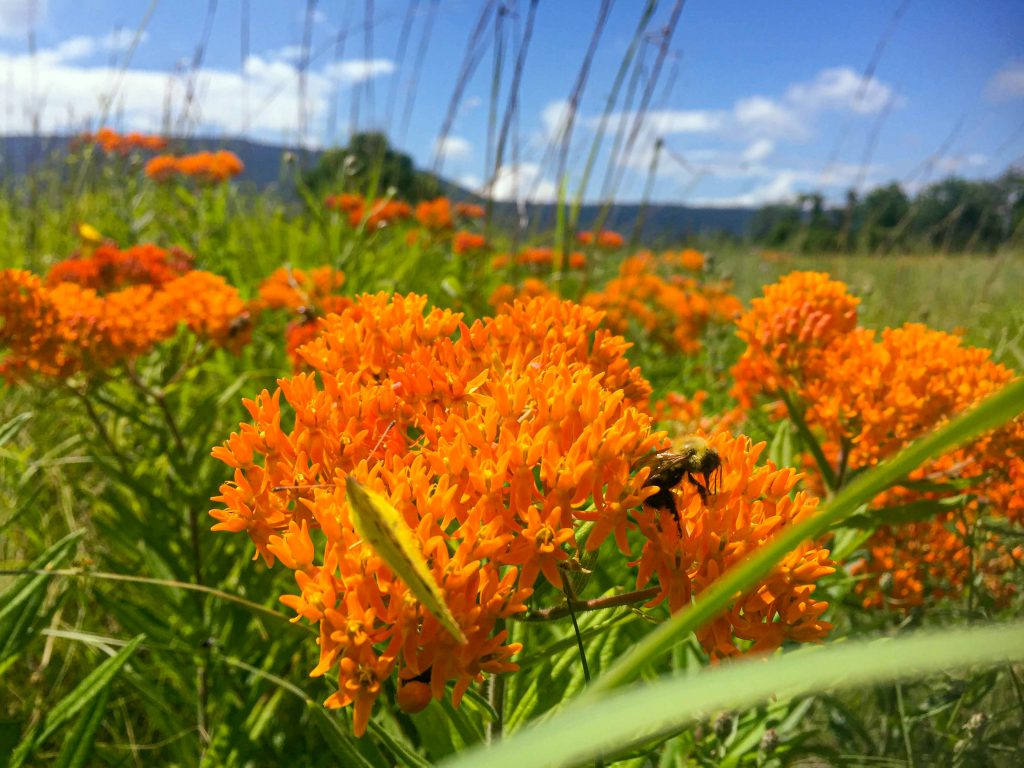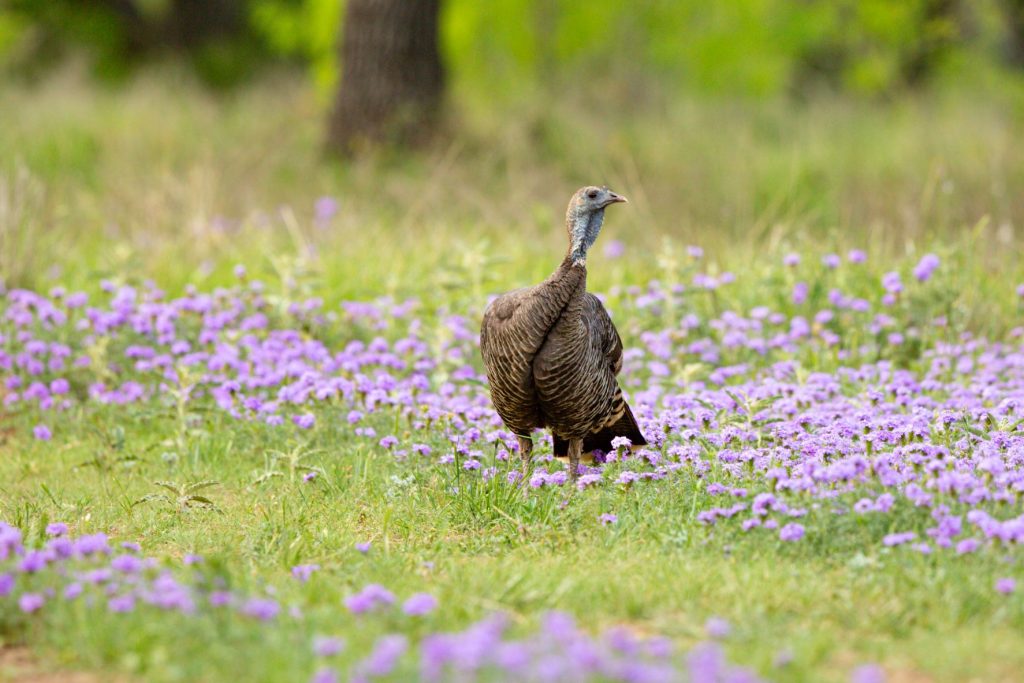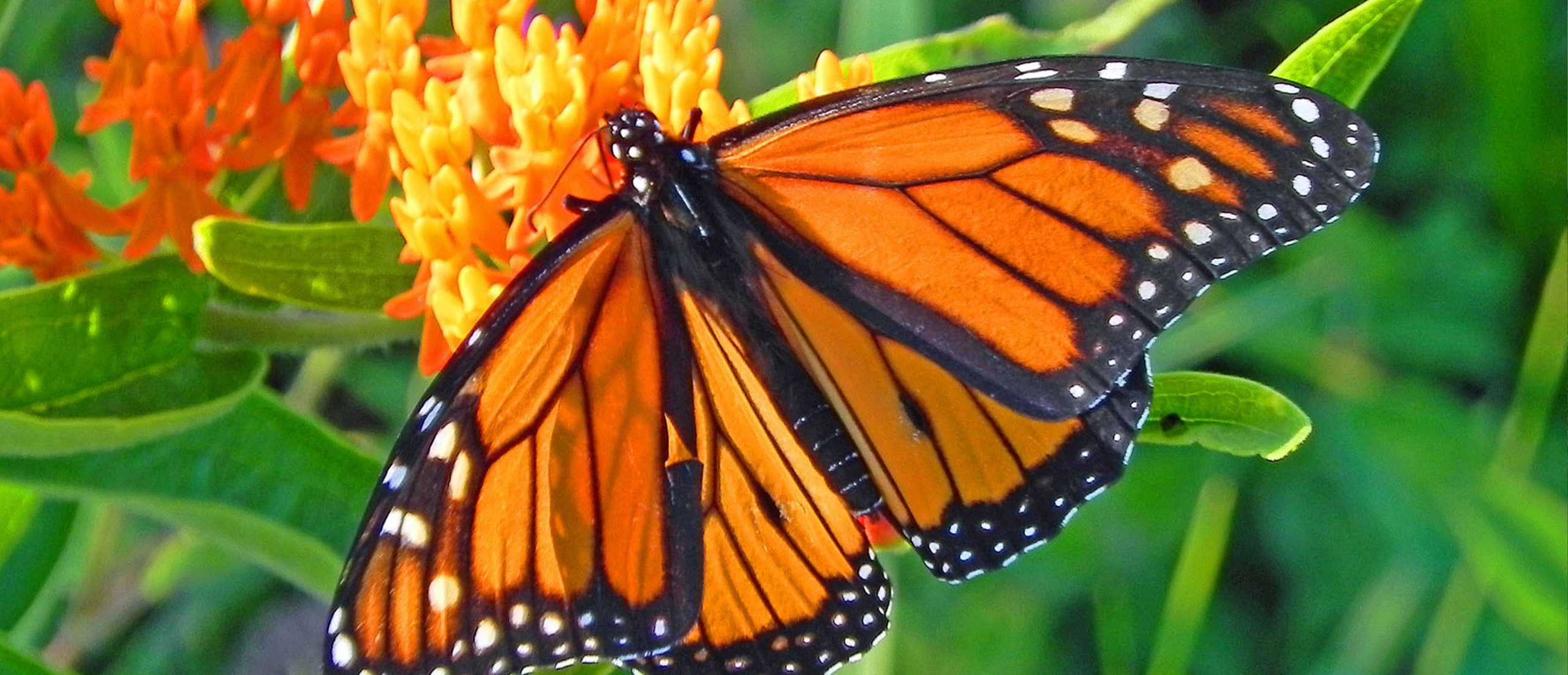Wild Turkeys and Pollinators
Unrelated at first glance, these two species thrive in similar habitats and exhibit a symbiotic relationship.
Studies have shown a direct relationship between plant diversity and pollinator diversity. The more robust and diverse plant communities are, the more diversified insect and pollinator communities will be. Wild turkeys, too, benefit from a mixed plant and insect community.

“Healthy pollinator habitats are a component of overall diverse, resilient and healthy systems that benefit turkeys greatly,” said Doug Little, NWTF director of conservation operations in the East. “Good pollinator habitats have a wide range of herbaceous plants that provide different qualities, such as vegetation density and insects they attract, both of which benefit wild turkeys.”
Milkweed, for example, is essential for the iconic Monarch butterfly and so many other pollinators and insects that feed on its nectar. This makes it great for wild turkeys, especially poults.
“Young wild turkey poults require almost an entirely insect-based diet for the first two weeks after hatching,” Little said. “Since milkweed harbors a significant amount of insects that turkeys forage on, it’s an attractive plant for wild turkeys to seek out. Also, milkweed is a broad-leaved plant, so where it grows in pockets within fields is generally a less dense area that poults can more easily navigate.”
If you see a grassland with bees and butterflies, there are more than likely turkeys around. This, coupled with the increasing decline of pollinator habitat throughout the U.S., is why the NWTF takes creating and enhancing pollinator habitat seriously.

For instance, the NWTF is working on the most extensive native grassland and pollinator-specific management project in Pennsylvania. The National Fish and Wildlife Foundation awarded the NWTF with a $100,000 grant through its Monarch Butterfly and Pollinators Conservation Fund to help manage and restore nearly 2,000 acres to a native state of forbs and grasses.
“The pollinator species mix to be planted features 17 different forbs and grasses with at least three blooming in each season, including two varieties of milkweed,” said Mitch Blake, NWTF district biologist for Pennsylvania, New York, Maryland, New Jersey and Delaware. “Along with the significant amount of insect production, the pollinator habitat will provide a solid food source in the fall through seed production by forbs, such as partridge pea.”
Throughout the two-year grant, partners will create and restore early successional grassland habitat using various management practices that provide quality habitat for species of greatest conservation need, such as monarch butterflies, and supply quality nesting brood-rearing habitat for wild turkeys, quail and many other critters.
Cully McCurdy, NWTF district biologist for Virginia, West Virginia and North Carolina, is also working with partners to enhance habitat that benefits both wild turkeys and pollinators.
In Virginia, on George Washington and Jefferson National Forests, the NWTF is helping plant a native warm-season grass mix with a high native pollinator seed composition.
“Seven wildlife openings in the Sandy Springs area, totaling 10.6 acres, are being reclaimed with this seed mixture,” McCurdy said. “A portion of [the acreage] will be planted in strips with cool-season grass borders.”
McCurdy also recently worked with the West Virginia Department of Natural Resources and the NWTF West Virginia State Chapter to establish two 4-acre wildlife openings on the Walker Creek Wildlife Management Area, both of which feature a pollinator-rich native warm-season grass mixture.
“This project is a collaboration between the WVDNR and NWTF West Virginia State Chapter utilizing Super Fund dollars and a generous $17,500 grant from TC Energy,” McCurdy said.
Derek Alkire, NWTF district biologist for Alabama, Kentucky and Tennessee, too, is working with partners to create pollinator habitat that will benefit wild turkeys.
On the Land Between the Lakes National Recreation Area, the NWTF purchased native seed in 2021 and 2022 to complete 55.8 acres of warm-season grass plantings as part of a stewardship agreement.
“These plantings specifically targeted areas that would provide excellent brood habitat adjacent to already existing nesting cover,” Alkire said.
Whether it’s NWTF biologists across the country working with partners on WMAs, the NWTF conservation seed program, creating wildlife openings or landscape-scale grassland restoration projects like in Pennsylvania, the NWTF takes advantage of the many ecological benefits that come from delivering pollinator conservation.
“Sometimes people see the NWTF implementing pollinator conservation and think, ‘I thought you were a turkey conservation organization,’” Little said. “However, when we work to increase pollinator habitat, we are also working to increase wild turkey habitat.”
